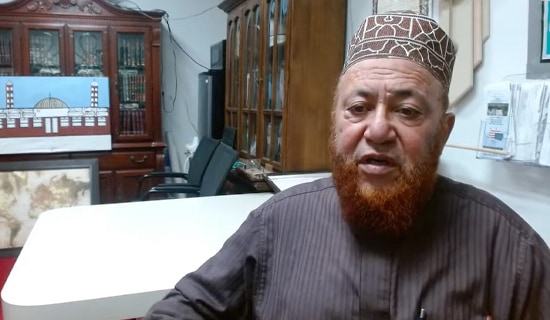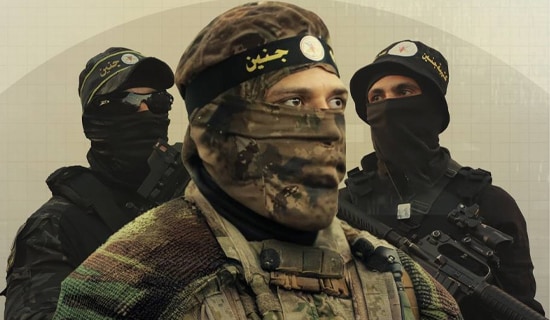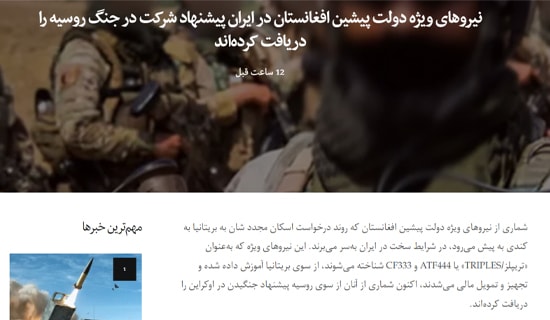On January 30, 2019, U.S. President Trump criticized the U.S. intelligence community's Worldwide Threat Assessment, released January 29, 2019,[1] tweeting that it is "naïve"[2] about the danger posed by Iran, after U.S. intelligence chiefs said at a hearing in the Senate intelligence committee that Iran is not aiming to develop nuclear weapons and is not violating the JCPOA nuclear deal.
A February 11, 2019 MEMRI report[3] presented four examples of how the Iranian regime has deceived the U.S. intelligence community. This report will present additional examples, directly concerning Iran's development of components of nuclear weapons.
Incredible as it may seem, the JCPOA allows Iran to develop a nuclear explosive device under certain conditions. Section T of Annex I of the agreement, titled "Activities Which Could Contribute To The Design And Development Of A Nuclear Explosive Device," states, in Paragraph 82.1, that Iran will not engage in "Designing, developing, acquiring, or using computer models to simulate nuclear explosive devices." In 82.4, it states that Iran will not engage in "Designing, developing, fabricating, acquiring, or using explosively driven neutron sources or specialized materials for explosively driven neutron sources."
However, in 82.2 and 82.3, respectively, it states that Iran may engage in "Designing, developing, fabricating, acquiring, or using multi-point explosive detonation systems suitable for a nuclear explosive device" and "Designing, developing, fabricating, acquiring, or using explosive diagnostic systems (streak cameras, framing cameras and flash x-ray cameras) suitable for the development of a nuclear explosive device," subject to "approv[al] by the Joint Commission for non-nuclear purposes and subject to monitoring."
The following is Section T of the JCPOA's Annex I – Nuclear-Related Measures:
"T. ACTIVITIES WHICH COULD CONTRIBUTE TO THE DESIGN AND DEVELOPMENT OF A NUCLEAR EXPLOSIVE DEVICE
"82. Iran will not engage in the following activities which could contribute to the development of a nuclear explosive device:
"82.1. Designing, developing, acquiring, or using computer models to simulate nuclear explosive devices.
"82.2. Designing, developing, fabricating, acquiring, or using multi-point explosive detonation systems suitable for a nuclear explosive device, unless approved by the Joint Commission for non-nuclear purposes and subject to monitoring.
"82.3. Designing, developing, fabricating, acquiring, or using explosive diagnostic systems (streak cameras, framing cameras and flash x-ray cameras) suitable for the development of a nuclear explosive device, unless approved by the Joint Commission for non-nuclear purposes and subject to monitoring.
"82.4. Designing, developing, fabricating, acquiring, or using explosively driven neutron sources or specialized materials for explosively driven neutron sources."[4]
Iran has refused to permit monitoring according to Section T of the JCPOA. As a result of this, in September 2017, International Atomic Energy Agency secretary-general Yukiya Amano addressed the JCPOA member countries (i.e. the Joint Commission) with a request for clarification regarding the authority of the IAEA in this matter.[5] Iran and Russia maintained that the IAEA has no authority to monitor Iran's activity in the area of developing a nuclear explosive device, while the U.S. and the other Western countries in the Joint Commission – who constitute the majority in the commission – have not enforced the IAEA's authority to monitor Iran in this area, neither during the Obama administration nor, so far, during the Trump administration.
Thus, a situation has been created in which in the most critical area of developing nuclear weapons – i.e. a nuclear explosive device – the IAEA has no oversight on Iran's activities.
The U.S. intelligence community published its intelligence assessment without reference to the fact that there is no oversight whatsoever on Iran's activity to develop a nuclear explosive device.
* Yigal Carmon is President of MEMRI; A. Savyon is Director of the MEMRI Iran media project.
[1 Dni.gov/files/ODNI/documents/2019-ATA-SFR---SSCI.pdf, January 29, 2019.
[2] @realDonaldTrump, January 30, 2019.
[3] MEMRI Daily Brief No. 177, How Iran Deceived The U.S. Intelligence Community: Four Examples, February 11, 2019.
[4] State.gov/documents/organization/245318.pdf, July 14, 2015
[5] Reuters, September 26, 2017.





